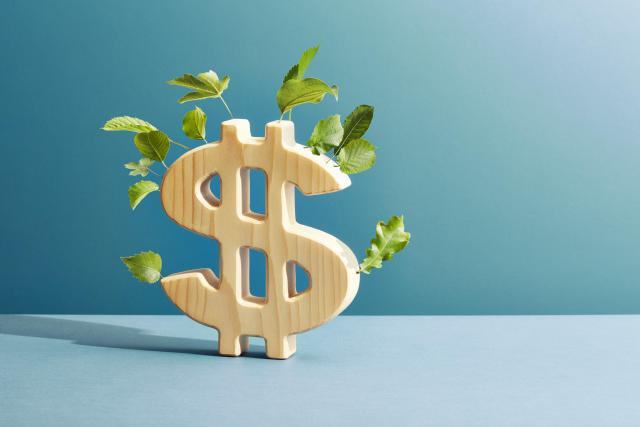
If you have a large sum of money you’re not quite sure what to do with, you’re in luck. Many high-yield savings accounts are paying annual percentage yields (APYs) of 5.00% or higher right now, and there are lots of different banks to choose from.
These high rates were unheard of several years ago, but their prevalence now means you can earn significant interest on large sums of money. Here’s how much $10,000 could become in just one year and why a savings account is a great choice, no matter how much money you have.
How much $10,000 becomes in one year
Putting $10,000 into a savings account with an APY of 5.00% means you could have about $10,511 just one year later. That’s more than $500 of free money in just 12 months!
Not everyone has $10,000 to put in a savings account, but that doesn’t mean you can’t still earn impressive interest. Here are a few more examples of smaller sums earning a 5.00% rate over one year:
- $5,000 earns about $255
- $2,500 earns about $128
- $1,000 earns about $51
- $500 earns about $25
Of course, you’d have to leave your money in the savings account and not take any of it out for your initial sum to reach these amounts.
Why high-yield savings accounts are a great option
Many people already have savings accounts, but you’re missing out if you don’t have one paying a high APY right now. Here are just a few of their benefits.
1. They pay a high yield
As I mentioned above, it’s not difficult to find savings accounts with rates from 4.00% to 5.00%, and some are even higher. This makes it easy for your cash to grow quickly without you having to do anything. This is an example of passive income.
2. There aren’t many fees
Most high-yield savings accounts don’t charge fees. That’s because many of them are available from online banks that don’t have the same expensive overhead costs — like running physical branches — that brick-and-mortar banks have. But before you open an account, check for any fees, like for monthly maintenance or not maintaining a minimum balance.
3. Low or no minimum deposit amount
There are plenty of savings accounts that have a minimum deposit of $0 or just $1. This gives you the option to open a high-yield account and then fund it when you can.
4. They’re safe
Just like other bank accounts, the best high-yield savings accounts are FDIC insured, up to $250,000 per depositor per bank. If, for some reason, your bank goes out of business, you’re guaranteed to get your money back. Just check that your bank has this vital coverage.
5. You have easy access to your money
You can take your money out of a high-yield savings account whenever you want. This makes them a great place to keep your emergency fund without worrying about your money being tied up in investments — or potentially losing value.
One downside to high-yield savings accounts
The only downside to high-yield savings accounts is that the interest rate isn’t guaranteed. For example, if the Federal Reserve cuts interest rates later this year, your savings account APY will likely decrease to some extent.
Still, high APYs won’t disappear overnight. Even if rates drop, your money in a high-yield savings account will still earn a much higher rate than it would in a traditional savings account. This means that whether you have $10,000 to put into a high-yield savings account or $100, now is a great time to open one.





























